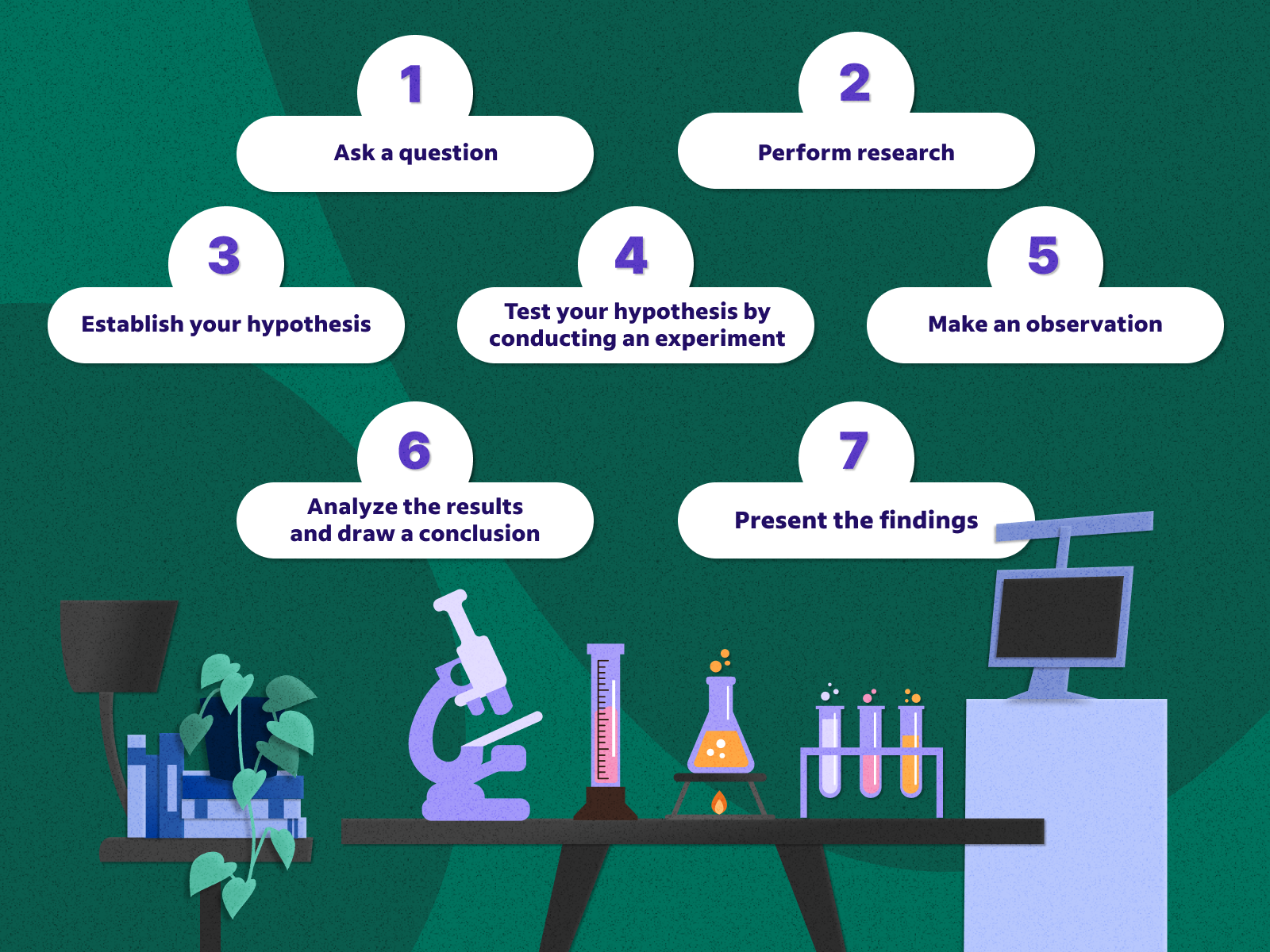The Scientific Method

The scientific method is a universal toolkit for solving problems, asking big questions, and discovering how the world works.
The Dive
The scientific method begins with one of the most powerful tools humans have: observation. This means paying close attention to the world around you—spotting something strange, noticing when something doesn’t work, or seeing a pattern no one else has caught. Every great discovery starts with someone curious enough to notice.
Once you’ve observed something, the next step is to ask questions. Why is it like that? How does it work? What caused it? Scientists are professional question-askers, poking holes in what is already known so they can explore the unknown. Questions are the doorway into deeper investigation.
Before testing an idea, scientists need background knowledge. Researching what others have already learned prevents repeating old mistakes and helps shape better questions. This step might mean reading scientific papers, searching online, looking at past experiments, or even studying natural history. Good research gives your investigation a strong foundation.
A hypothesis isn’t just a random guess—it’s an educated explanation that can be tested. Scientists usually write hypotheses in an if/then format: 'If I change this, then that will happen.' A good hypothesis sets up a clear prediction that can be checked through an experiment, guiding the entire investigation like a roadmap.
An experiment is how scientists test their hypothesis. In an experiment, they carefully design a setup with different groups: the test group (where they change something) and the control group (where nothing changes). They define variables clearly: the independent variable is what you change, the dependent variable is what you measure, and the controlled variables are the parts you keep the same so the test is fair.
Experiments aren’t just one-and-done. Scientists repeat trials, collect data over time, and look for patterns. Numbers, measurements, and observations are organized into graphs, charts, and tables. This data analysis step helps scientists see whether the results support or challenge their hypothesis.
Drawing conclusions means comparing your data to the hypothesis. Did your prediction hold up? Or did the evidence point in another direction? In science, a hypothesis isn’t 'right' or 'wrong'—it’s either supported or not. Both outcomes are valuable, because even unexpected results spark new questions and discoveries.
The last step is sharing what you learned. Scientists publish reports, give talks, or make presentations so others can test and build on their work. Science grows when ideas are shared, challenged, and improved. Collaboration keeps the cycle of discovery alive, reminding us that science is a team effort that stretches across time and place.
Why It Matters
The scientific method is more than a classroom ritual, it’s the backbone of discovery. It teaches us how to ask sharper questions, gather real evidence, and trust the process over assumptions. Whether you're building rockets, solving medical mysteries, or figuring out why your sourdough won’t rise, the scientific method turns curiosity into clarity.
?
Why is background research considered the most important step in the scientific method?
How is a hypothesis different from a guess?
What role does failure play in the scientific method?
Why is it important to share experimental results with others?
How does the scientific method show up in everyday life?
Dig Deeper
Science offers a way of discovering and understanding the world around us, driven by questions and tested with evidence. And it’s a twisty-turny team effort— you won’t find many lone geniuses out there, or straight lines from hypothesis to conclusion. In this episode of Crash Course Biology, we’ll talk about the big picture of how scientific progress is made, from peer review to mathematical models, with some exploding eggs along the way.
Explore the process scientists use to form questions, test ideas, and draw conclusions about the natural world.
Related

Weather Wonders: Observing Clouds and the Water Cycle
Clouds aren’t just fluffy sky art—they’re scientific clues that help us understand weather, climate, and the invisible processes shaping our planet.

Observation & Sorting
Observation and sorting aren’t just school skills—they’re life tools that help us think clearly, solve problems, and make better choices every day.
Reading the Sky: How We Measure Weather and Why It Matters
Weather isn’t just a conversation starter, it’s data, science, and survival. Tracking the atmosphere gives us clues to the future, insight into climate, and the power to make informed decisions.
Further Reading
Stay curious!
